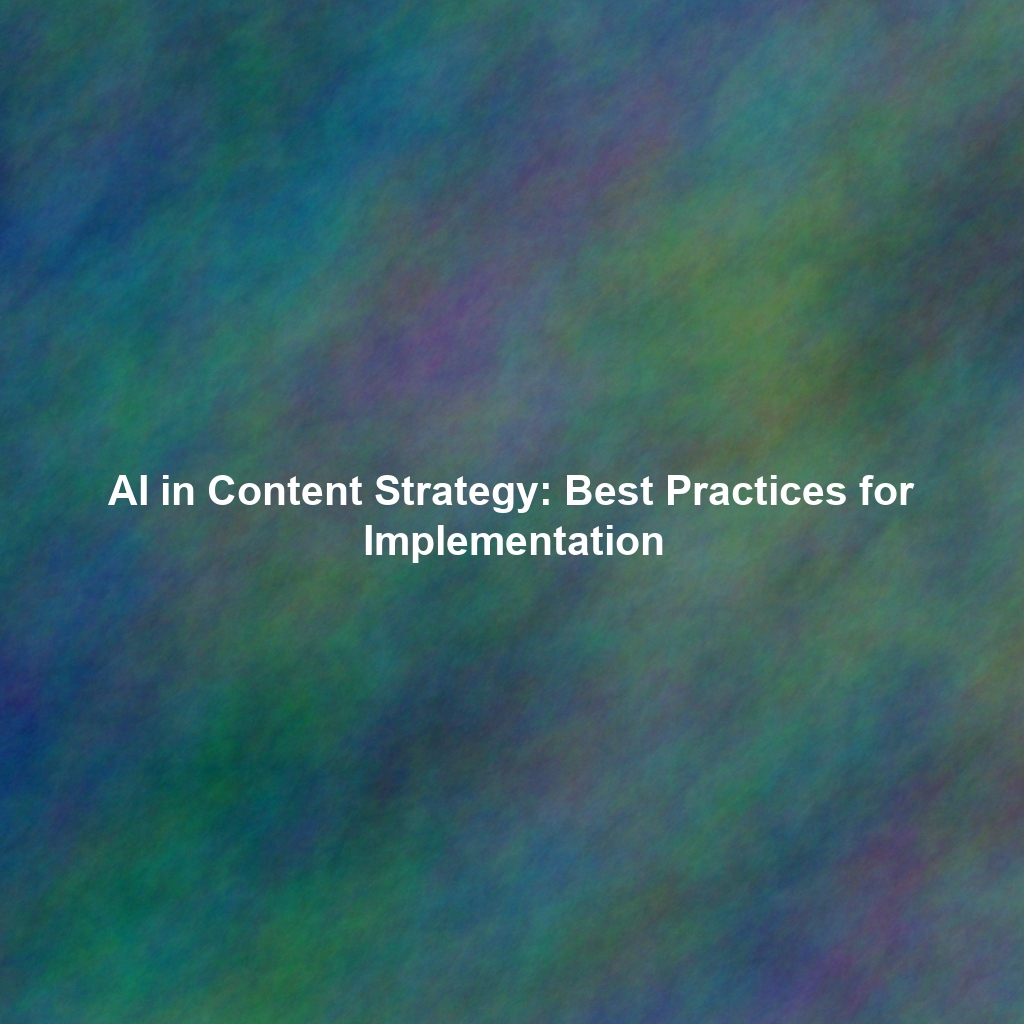This article will explore the foundational steps, practical exercises, and crucial considerations for developing a brand voice that not only communicates your message effectively but also builds trust, fosters loyalty, and creates an indelible impression in the minds of your audience. It’s about finding your brand’s true self and expressing it consistently and authentically across all channels.
Understanding Your Target Audience: The Indispensable Foundation of Your Voice
Before you can even begin the intricate process of defining your brand’s voice, you must first achieve a profound, empathetic understanding of precisely who you are talking to. Your brand voice is, at its heart, a form of communication, and effective communication is always tailored to the receiver. A deep, nuanced understanding of your target audience’s values, aspirations, pain points, daily challenges, preferred communication channels, and even their unique sense of humor is not just helpful; it is absolutely crucial. This goes far beyond mere demographics; it delves into psychographics – the intricate web of beliefs, attitudes, motivations, lifestyles, and personality traits that truly drive their behavior and decision-making.
Going Beyond Demographics: Uncovering the Human Story
While demographic data (age, location, income, occupation) provides a foundational framework, it’s merely the surface. To truly connect, you need to delve deeper into the human story behind the statistics. Ask yourself probing questions that reveal their inner world:
- What keeps your audience up at night? What are their biggest professional and personal pain points, fears, and frustrations that your brand can address?
- What are their dreams and ambitions? What are they striving for, and how can your brand help them achieve those aspirations?
- What kind of language do they use when talking to each other? Are they formal or informal? Do they use industry jargon, slang, or a more conversational tone? Mimicking their authentic language fosters immediate rapport.
- Where do they spend their time online and offline? Which social media platforms do they frequent? What publications do they read? What events do they attend? Understanding their media consumption habits informs where and how you communicate.
- What are their values and beliefs? Do they prioritize sustainability, innovation, tradition, community, or efficiency? Aligning your voice with their values builds deeper resonance.
Conducting thorough market research, deploying targeted surveys, analyzing customer support interactions, monitoring social media conversations, and even conducting informal interviews or focus groups can provide invaluable, qualitative insights into your audience’s world. This ethnographic approach reveals the emotional and psychological landscape that truly shapes their receptiveness to your brand’s message. For more on audience research, see this guide from MarketingProfs.
Creating Empathetic Audience Personas: Bringing Your Audience to Life
Once you’ve gathered a rich tapestry of information, the next step is to synthesize it into detailed audience personas. These are not just demographic profiles; they are fictional, yet highly representative, representations of your ideal customers. Each persona should include:
- A Name and Backstory: Give them a human name (e.g., “Marketing Manager Michelle,” “Small Business Owner Sam”) and a brief professional and personal background.
- Demographics: Age, location, job title, industry, company size.
- Psychographics: Goals, motivations, pain points, challenges, aspirations, values, and attitudes relevant to your product/service.
- Preferred Communication Channels: How do they prefer to receive information? (e.g., email, social media, webinars, blog posts, direct sales calls).
- Objections and Concerns: What are their potential hesitations or questions about your offering?
- Quotes: Include actual quotes from interviews or surveys that capture their voice and perspective.
Having these detailed personas readily available and consistently referenced will serve as a constant reminder to tailor your messaging to resonate with specific segments of your audience. They act as a filter, ensuring that every piece of content, every social media post, and every email speaks directly to a real person with real needs. This humanizes your communication strategy and prevents generic, one-size-fits-all messaging. For more on creating personas, check out HubSpot’s guide.
Anecdote: The Tech Startup’s Persona Revelation
A B2B tech startup, “SynergyFlow,” initially wrote content for “IT Managers.” Their engagement was low. After a deep dive into customer interviews, they created “IT Director David” (age 45, stressed by legacy systems, values reliability and ease of integration, reads industry blogs at night) and “Junior Admin Jessica” (age 28, new to the role, values clear instructions and quick wins, active on tech forums). Their content team then rewrote articles specifically for David (focused on ROI, strategic benefits) and Jessica (focused on step-by-step guides, troubleshooting). “It was like night and day,” their content lead, Emily, shared. “Our engagement metrics soared because we stopped talking to a title and started talking to a person.” This highlights the power of granular persona development.
Brainstorming Your Brand’s Personality: Defining Your Core Values and Essence
Your brand voice is not an arbitrary choice; it is an authentic extension of your brand’s inherent personality. And your brand’s personality, in turn, is deeply rooted in its core values, mission, and vision. What are the fundamental principles that underpin your business? What does your company truly stand for? Are you perceived as innovative and cutting-edge, trustworthy and reliable, playful and approachable, or sophisticated and authoritative? Identifying these foundational values is absolutely essential for creating a consistent, authentic, and resonant brand voice that feels genuine to both your internal team and your external audience.
The Adjective Exercise: Distilling Your Brand’s Essence
A deceptively simple but remarkably effective exercise to begin defining your brand’s personality is to brainstorm a comprehensive list of adjectives that describe your brand. Gather your core team (marketing, sales, product, leadership) for this session. Encourage free association, aiming for at least 20-30 words initially. Think about how you want customers to feel when they interact with your brand. Then, through discussion and consensus, narrow down the list to the 3-5 adjectives that most accurately and powerfully represent your brand’s core essence. These chosen words will serve as guiding principles for all your messaging, ensuring consistency and clarity.
- Example Adjectives: Innovative, Reliable, Friendly, Bold, Empathetic, Authoritative, Playful, Direct, Elegant, Practical, Transformative, Secure, Accessible, Visionary, Grounded, Disruptive, Nurturing, Efficient, Passionate.
- Narrowed Down Examples: If you’re a B2B SaaS company: “Innovative,” “Reliable,” “Direct.” If you’re a sustainable consumer brand: “Empathetic,” “Grounded,” “Nurturing.”
For each chosen adjective, briefly define what it means for your brand and, crucially, what it *doesn’t* mean. For example, “Direct” means clear and concise, not rude or abrupt. This nuance is vital.
Considering Your Brand’s Story: Humanizing Your Narrative
Every brand, regardless of its size or industry, has a unique story. What’s yours? How did your business come to be? What inspired its founding? What challenges have you overcome along the way? What pivotal moments shaped your journey? Sharing your brand’s origin story, its mission, and the passion behind its existence can profoundly humanize your brand and create a deeper, more emotional connection with your audience. People connect with stories, not just products or services. Frame your narrative in a way that aligns explicitly with your core values and resonates with your target audience’s own experiences, aspirations, or challenges. This storytelling approach builds authenticity and trust, allowing your audience to see the people and purpose behind the brand. For more on brand storytelling, see this article from Forbes.
Strategic Insight: Voice as a Differentiator
In markets where products or services are increasingly commoditized, brand voice can be a powerful differentiator. It’s not just about *what* you sell, but *how* you communicate it. A distinctive voice makes your brand memorable, fosters loyalty, and helps you stand out from competitors who might offer similar solutions but lack a compelling personality. This is particularly true in the AI-driven content era, where generic prose is becoming commonplace.
Tone-of-Voice Exercises: Crafting Your Unique Communication Style
Once you’ve clearly defined your brand’s personality through its core values and descriptive adjectives, the next crucial step is to translate that personality into a distinctive communication style – your tone of voice. This is where the abstract becomes concrete, and you begin to articulate *how* your brand sounds in different scenarios. Tone is the emotional inflection of your voice; it can be serious, humorous, empathetic, authoritative, casual, or formal. The key is to ensure it’s consistent with your brand personality while adaptable to context.
Role-Playing Scenarios: Practicing Your Brand’s Voice
One of the most effective ways to develop and refine your brand’s tone of voice is through practical, scenario-based role-playing exercises. Gather your content, marketing, and customer service teams. Imagine your brand responding to various communication scenarios, ranging from routine interactions to crisis management. Discuss and draft responses, paying close attention to the language used, the level of formality, the emotional tone, and how it aligns with your chosen adjectives. Examples of scenarios:
- Responding to a Customer Complaint: How would your brand sound when addressing a frustrated customer? Empathetic and apologetic? Direct and solution-oriented?
- Announcing a New Product Launch: Enthusiastic and innovative? Formal and informative? Playful and exciting?
- Engaging in a Social Media Conversation: Casual and witty? Professional and helpful?
- Sending a Welcome Email to a New Subscriber: Warm and inviting? Concise and action-oriented?
- Writing a Serious Company Announcement (e.g., data breach): Transparent and reassuring? Formal and legalistic?
This exercise helps internalize the brand voice and ensures that different team members can consistently apply it across various communication contexts.
Analyzing Competitor Messaging (The Right Way): Learning Without Imitating
While the goal is to develop a unique voice, analyzing your competitors’ messaging can provide valuable insights and help you identify opportunities for differentiation. This isn’t about direct imitation; it’s about strategic observation. Identify:
- What works well for them: What aspects of their messaging resonate with their audience? What kind of engagement do they receive?
- What doesn’t work: Are there common pitfalls or generic approaches you can avoid?
- How they position themselves: What unique selling propositions (USPs) do they emphasize? What emotional appeals do they use?
- Their linguistic style: Are they formal, informal, technical, conversational?
- Their gaps: Are there emotional connections or specific tones they are missing that you can own?
Use this information to consciously differentiate your brand and carve out your own unique space in the market. If all your competitors sound corporate and formal, perhaps a more approachable, human, or even witty voice could help you stand out. If they are all playful, perhaps a more authoritative and direct tone is your differentiator. For competitive analysis strategies, see this article from Investopedia.
Anecdote: The Financial Advisor’s Human Touch
A traditional financial advisory firm, “WealthGuard,” realized their marketing sounded just like every other firm: formal, jargon-filled, and cold. Their new marketing director, Sarah, wanted a warmer, more empathetic voice. She studied how successful personal finance bloggers communicated and applied those principles. Instead of “Optimize your portfolio for Q3 growth,” their emails became “Let’s talk about securing your family’s future.” Their blog posts used relatable analogies instead of complex charts. “Our client inquiries increased by 20%,” Sarah noted. “People told us they felt we actually understood their anxieties, not just their assets. It was about connection, not just numbers.” This shows how a human voice can transform even a traditionally formal industry.
Ensuring Consistency Across All Channels: Maintaining Brand Identity and Trust
Consistency is not merely a preference; it is absolutely key to building a strong, recognizable, and trustworthy brand voice. Your brand’s personality should be cohesive and uniform across every single touchpoint and channel where you interact with your audience. This includes your website, social media profiles, email marketing campaigns, customer service interactions (both online and offline), sales collateral, advertising, and even internal communications. This unwavering consistency creates a seamless, predictable brand experience, reinforces your brand’s personality, and builds deep-seated trust over time. Inconsistency, conversely, can confuse your audience, dilute your brand identity, and erode credibility.
Developing a Comprehensive Brand Voice Style Guide: Your Brand’s Rosetta Stone
To ensure consistency across a growing team and multiple channels, creating a comprehensive brand voice style guide is non-negotiable. This document serves as your brand’s Rosetta Stone, outlining every aspect of your communication. It should include:
- Brand Personality Adjectives: Reiterate the 3-5 core adjectives that define your brand’s essence, with clear explanations of what each means and doesn’t mean in practice.
- Tone-of-Voice Guidelines: Provide specific examples of how your brand’s tone should shift in different contexts (e.g., formal for legal notices, empathetic for customer complaints, enthusiastic for product launches). Include “Do’s and Don’ts” for language, humor, and formality.
- Specific Writing Conventions: Detail practical rules for grammar, punctuation, capitalization, use of emojis, abbreviations, jargon, and brand-specific terminology. For instance, do you use contractions? Do you capitalize specific product names?
- Audience Personas Summary: A brief overview of your key audience personas to remind content creators who they are speaking to.
- Examples of Good and Bad Content: Include examples of content that perfectly embodies your brand voice, and examples that miss the mark, explaining why.
- Glossary of Approved/Disapproved Terms: A list of words or phrases to use or avoid.
This guide will serve as an indispensable reference point for all team members who create content for your brand, from marketing specialists to sales representatives and customer support agents. It ensures everyone is singing from the same hymn sheet, maintaining a unified brand presence. For more on style guides, see this article from Semrush.
Regular Review and Feedback Loops: The Evolution of Voice
Your brand voice is not static; it should be a living, evolving entity. Regularly review your brand’s messaging across all channels to ensure ongoing consistency and effectiveness. Solicit feedback from your internal team (especially those on the front lines, like sales and customer service) and, crucially, from your audience. Conduct surveys, monitor social media sentiment, and analyze engagement metrics to identify areas for improvement or potential misinterpretations. Your brand voice should subtly evolve over time as your business grows, your market shifts, and your audience’s needs and preferences change. This iterative process of listening, adapting, and refining ensures your voice remains authentic, relevant, and impactful. Consider quarterly audits of your content to ensure adherence to the style guide and to identify emerging opportunities for refinement.
The Power of Human Connection: Your Ultimate Competitive Advantage
In a world increasingly saturated with generic, algorithmically generated content, the profound power of human connection is more valuable, more resonant, and more indispensable than ever before. While AI can process data and generate text with remarkable efficiency, it cannot replicate genuine empathy, nuanced understanding, authentic storytelling, or the subtle emotional intelligence that defines truly impactful human communication. These are the qualities that build deep, lasting relationships and differentiate your brand in a crowded marketplace.
By investing the necessary time, strategic effort, and creative energy to meticulously craft a unique, authentic, and emotionally resonant brand voice, you can achieve a powerful competitive advantage. You will not only differentiate yourself from the growing tide of AI-driven content but also build stronger, more meaningful relationships with your audience, foster unwavering loyalty, and create an indelible impression that transcends fleeting trends. Remember, your brand voice is not just about *what* you say, but *how* you say it – the personality, the tone, the values that shine through every word. Embrace your brand’s unique personality, connect with your audience on a truly human and emotional level, and let your authentic voice shine through. In the age of AI, humanity is your ultimate superpower.
 Skip to content
Skip to content

